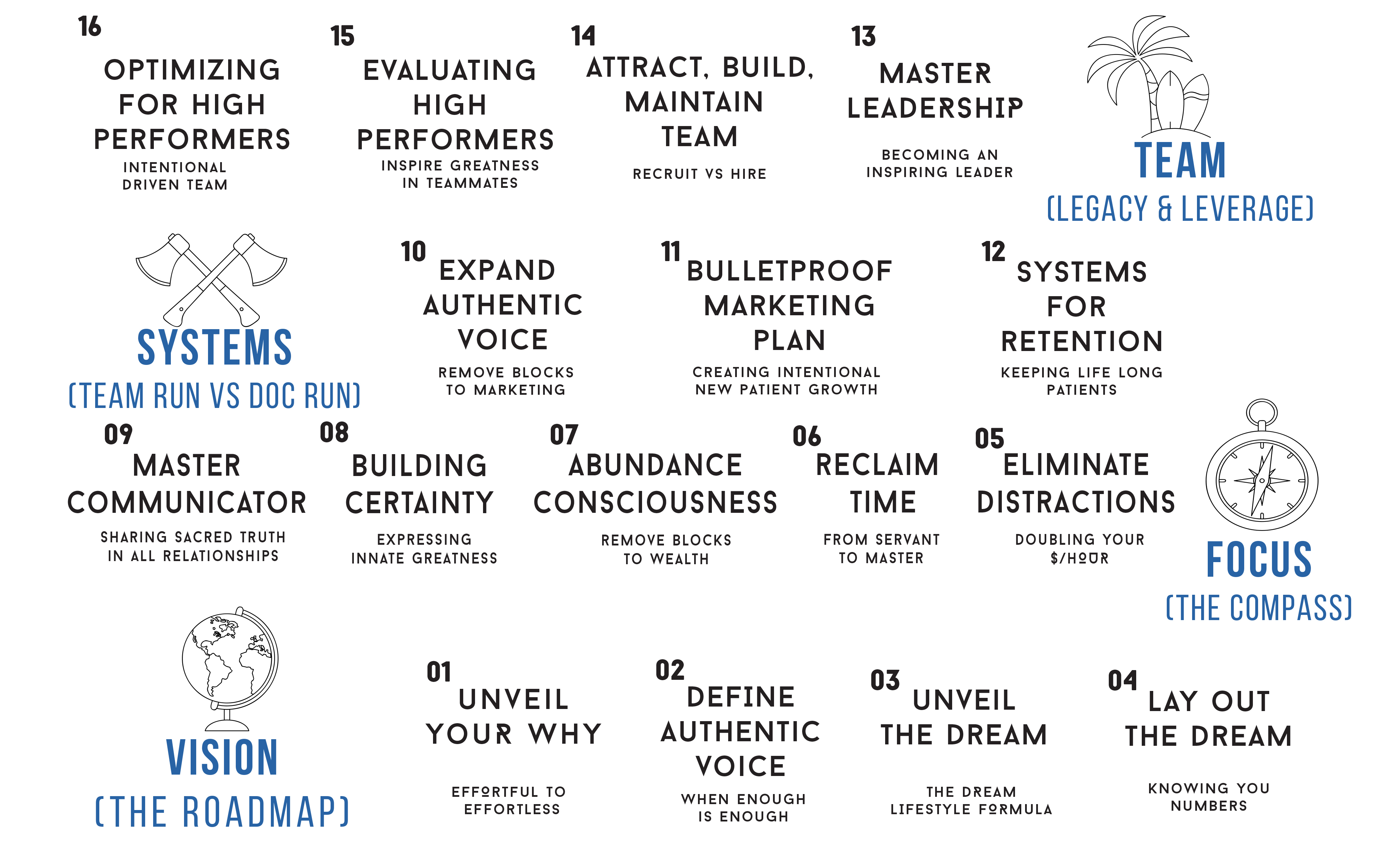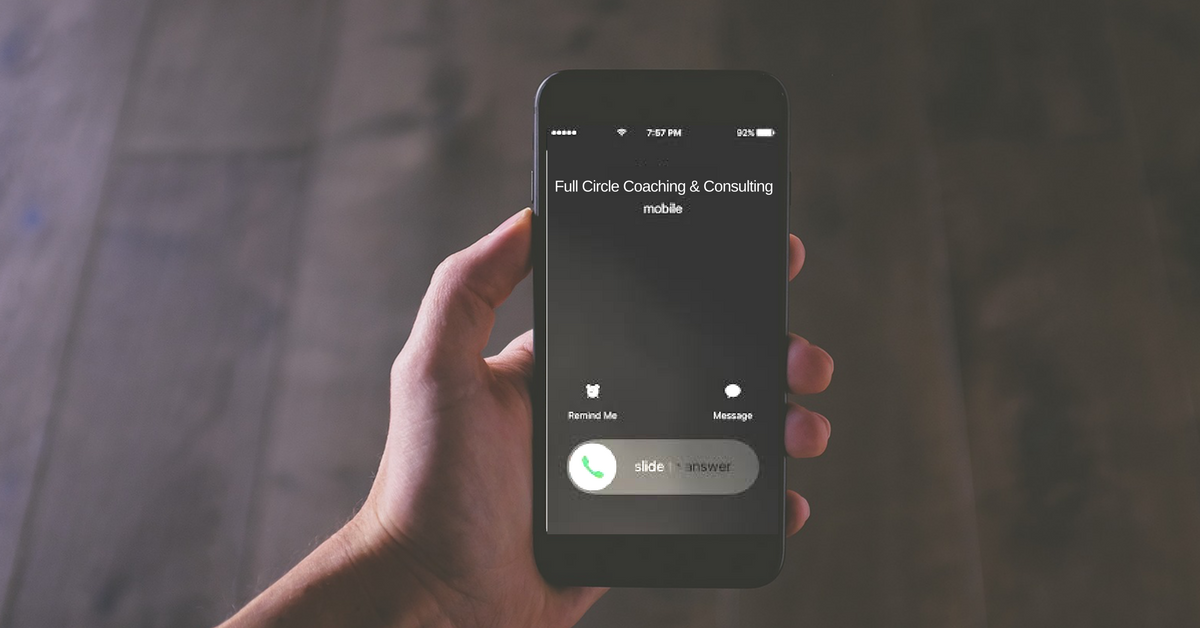What if you could grow your practice revenue without marketing…
They say it costs 5x, up to 25x more to acquire a new patient than to retain an existing one.
One way to retain more patients is to educate them with table talk and healthcare classes, but if that was working for you, you wouldn’t need reactivation templates.
It’s frustrating when you can see that a patient needs to stick around longer, for their benefit AND yours, but how do you communicate this without sounding salesy?
It would be nice to have a consistent stream of new patients, but chiropractic marketing strategies can be expensive and daunting.
The beautiful thing about reactivation templates is that they don’t cost much time or money to implement, they don’t require you to learn anything new (because who has time for that?), and you can inject high-quality patients who already know/like/trust you!
So today we’re going to share Full Circle’s…
3 R’s of Reactivation
This is a way for your patients to come back into care while thinking it was THEIR idea!
So let’s get into it.
The 3 R’s of Chiropractic Reactivation Letters:
We wanted to make it memorable for you, so here are the 3 R’s to consider when creating effective reactivation letters…
1. Reason
2. Relate
3. Reactivate
Where docs go wrong is going right for the “Reactivate” step, which is a quick way to come off as salesy and sleazy and it creates more bad than good for your chiropractic marketing efforts.
Remember, you want to make them think it’s THEIR idea.
1. Reason:
First way to come off as a friend, not a salesman, is to have a real reason for reaching out.
People can sniff out a liar and if it’s a fake rationale, they’ll feel like they’re being sold to.
Instead, create an event or deliver an announcement that gives them a reason to come see you:
- do you have a new piece of technology that can help them?
- do you have a patient appreciation event going on?
- do you have a new associate who might help them in a new way?
- do you offer a new service they might want to experience?
These are REAL reasons someone can benefit from coming back to your office.
2. Relate:
In the “Relate” stage, we want to get them to self-identify with their need for your services in a way that sounds “Doctor Recommended” rather than “I want your money”.
This is patient education done right.
You can’t make them care about their health if they just don’t see the value (yet), but what you can do is get them to the awareness stage. Remember, they won’t be looking for a solution to something if they don’t even have awareness of it yet.
Focus your reactivation letter toward ONE thing, it’s not a newsletter with 20 different messages.
So if you’re trying to get them to the awareness stage, poke at symptoms that their body is giving them that they may be overlooking.
Most people are not hypochondriacs and consider their pain and discomfort “normal”.
Let’s help them realize a daily Advil should not be “the norm”.
That neck pain they have periodically is part of a greater issue.
If you can open their eyes to what is actually happening in their body, then your only job after that is to be the doctor and help them find a solution – which is probably your services!
It’s not selling at this point.
Especially if you can wrap a story about your own experience with this, or a patient you’ve helped. The simplest way to get around the part of the brain that is looking for a reason to say “No” is with storytelling.
3. Reactivate:
Here’s the hard part – getting them to pick the phone or open their emails and book their next appointment.
After you get them in, you can get their next appointment booked with WAY less effort.
So how can you get them to take the necessary action steps?
There’s nothing wrong with incentives.
Maybe you have a discount for their next appointment if it’s been a while since they’ve been into the office. They need to be reminded of how good they feel after they see you, and the best way to remind them is to give them that experience.
Or perhaps you have an ongoing monthly draw for something of real value that they can enter into the ballot after their appointment… call it Patient Appreciation.
If you have massage in-house, you can give them a free 15-minute massage with their next appointment.
We need to remember people don’t always do what’s best for them so it’s in our best interest to do what it takes to get them back into the system.
I commonly had a 4-week waiting list (we only accepted 2 new patients per day) and still had my CA’s sending out reactivation letters. It’s ALWAYS more economical to reactivate those patients who already know/like/trust you than to find one on the internet.
– – –
Where This Fits Into Your Journey
The Reactivation Letters comes from our Bulletproof Marketing Plan (step 11) on the journey from a plateaued practice to a profitable one.
 A lot of chiropractors get hung up on needing new patients or more patients before they can start living their life and taking more time for themselves and their family.
A lot of chiropractors get hung up on needing new patients or more patients before they can start living their life and taking more time for themselves and their family.
We’re here to show you that you can reclaim your time BEFORE you even start marketing.
As you can see from our Practice From Within journey, we don’t put an emphasis on marketing or any practice related systems until we fix YOUR mental systems.
You have to fix the leaks that are causing you to lose patients and revenue before you add anyone else through the pipeline with marketing and retention systems.
Trying to create success by focusing on these external pieces first is like buying bigger shoes hoping that will make your feet grow.
You can’t spend your way into a successful practice.
You can’t hustle and work hard to get you to the next level of success – you know because that’s how you got where you are today and it’s no longer enough.
Fix the patient and revenue leaks, get out of your own way, and then we can add external marketing.
If you to find out more about the Practice From Within journey, apply to talk to a coach to see how we help docs double their practice and take more time off, often without marketing.


